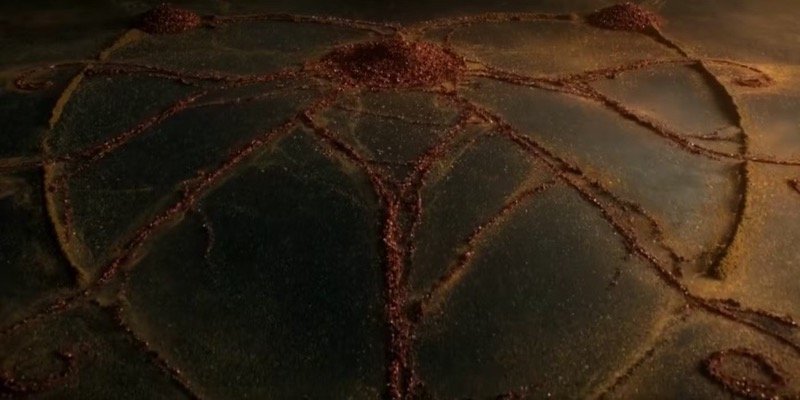What Does The Title Sequence Mean In 'The Rings Of Power' Season 2?
Image Source: YouTube
Season 2 of The Rings Of Power recently concluded, and this season was much better than the first one. The show is set to go for five seasons, and Amazon is determined to keep the show alive. One of the coolest things about the show is the title sequences. Most shows nowadays have some sort of title sequence, but of course, some are cooler than others. The Rings Of Power title sequences are very cool, but what do the symbols in the sequence mean?
The title sequence in the first season utilized something called cymatics, which makes sound visible to our eyes, to tell the story and creation of Middle-earth. By making the surface vibrate in the correct way, it enables small rocks and grains to move and form different shapes, which are rich in symbolism. The season 2 credits are a bit different, as they don't show any key events in the history of Middle-earth but instead allude to symbols and objects that have already shown their importance.
RELATED:
Image Source: Collider
One of the most noticeable differences between both credit sequences is the colors. The first season had gold-colored grains, whereas the second season had the inclusion of red grains. The red, of course, is not just there randomly, and instead is a symbol of Sauron's malice and all the blood that will be spilled in season 2. Later in the sequence, black grains start to infect the gold grains. The music also becomes more sinister, and the movements of the grains become more aggressive. These black grains could symbolize Morgoth, also known as Melkor, and how he started singing a different hymn that led to the darkness of Arda.
Once the grains start moving, they form into the shape of a leaf, which symbolizes Celebrimbor's new forge in Eregion. The forge is shaped like a leaf and has small circular dishes on its edge. The next part of the sequence shows the nineteen rings, all organized. The top row contains the nine rings for Men, the next row the seven rings for the Dwarves, and the last row is the three for the Elves. Eventually, there will be an even twenty once the One Ring is made.
Image Source: Collider
The Rings then turn into a tree. This symbolizes that Trees have been important symbolism in the series, so showing it in the sequence makes sense. In the prologue of season 1, we see the Two Trees of Valinor. Not only that, but the trees are done in the same style as the White Tree of Gondor on the flag. A tree in Lindon also symbolizes the Light of the Eldar in Middle-earth. Another tree is in Prince Durin’s quarters in Khazad-dum, which was given to him by Elrond. The White Tree Of Numenor symbolizes the devotion to the Valar and the realm’s faith, something that will be tested in the future.
The grains eventually turn into an eight-pointed star, which symbolizes the House of Feanor. Feanors influence upon Arda began in the Year of the Trees and would continue for thousands of years after. This was something Galadriel neglected to mention during her history lesson in episode 1 of the first season. This is rectified hower when Celebrimbor and Elrond mention Feanor during their conversation in season 2.
Image Source: ScreenRant
Following the Star of Feanor is the symbol of the Silmarils. The symbol of three circles, arranged in a triangle shape, mirrors how the symbol of the Silmarils is often presented and their creation during the Year Of The Trees.
The ending of the sequence shows a massive circle in the middle of an ornate, eye-looking shape. This clearly represents Sauron. The circle in the center likely symbolizes the One Ring, but the overall design seems to look more like the Eye of Sauron. This, being the final part in the sequence, tells viewers that the threat of Middle-earth has gone from Morgoth to Sauron.
READ NEXT:
Sources: Collider, ScreenRant

















